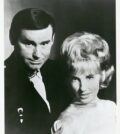- The Appalachian Spirit: 49 Winchester at Two Step Inn Festival 2024
- Wyatt Flores at Two Step Inn: Photos and Review
- Legendary Neal McCoy at Two Step Inn: Review and Photos
- Mark Chesnutt at Two Step Inn: Photos and Review
- Rising Star Sadie Bass Shines at the Faster Horses Festival
- Sawyer Brown at Faster Horses: A High-Octane Celebration of Four Decades
The real story behind the Bellamy Brothers’ song, “Old Hippie”
If you’re a fan of country music, you’ve probably heard the song “Old Hippie” by The Bellamy Brothers. It’s a classic tune that tells the story of a man who grew up in the turbulent 1960s, went to Vietnam, and struggled to adapt to the changing times. But do you know the story behind the song? How did David Bellamy, who wrote the lyrics, come up with the idea? And what happened to the old hippie after the song was released?

The Bellamy Brothers are Howard and David Bellamy, two brothers from Florida who started their musical career in the early 1970s. They had a breakthrough hit in 1976 with “Let Your Love Flow”, a pop-rock song that topped the charts in several countries. They followed it up with more hits in the pop, country, and urban cowboy genres, such as “If I Said You Had a Beautiful Body Would You Hold It Against Me”, “Redneck Girl”, and “Dancin’ Cowboys”.
David Bellamy had written a hit a few years earlier for Jim Stafford called “Spiders & Snakes” and that break brought the brothers to California to live and work with Stafford. Thru that connection they met Neil Diamonds drummer who thought the song would be a great song for Howard and David.
In 1985, they released their album Howard & David, which featured the song “Old Hippie”. David Bellamy said he wrote the song as a tribute to his generation, the baby boomers who experienced the Vietnam War, the Woodstock festival, the hippie movement, and the assassination of John Lennon. He said he knew several people who fit the description of the old hippie, who used marijuana, listened to rock music, and refused to let go of their lifestyle. He also said he wanted to show the contrast between the idealism of the 1960s and the realism of the 1980s.
The song was a huge success, reaching No. 2 on the Billboard Hot Country Singles chart in July 1985 and No. 1 on the RPM Country Tracks chart in Canada. It also received critical acclaim, being ranked 95th in Rolling Stone magazine’s list of the 100 greatest country songs in June 2014.
The song resonated with many listeners who identified with the old hippie’s struggles and nostalgia. It also sparked curiosity about what happened to him after the song ended. Did he find happiness? Did he change his ways? Did he ever reunite with his old friends?
The Bellamy Brothers decided to answer these questions by releasing two sequel songs that followed the old hippie’s life in different stages. In 1995, they released “Old Hippie (The Sequel)”, which appeared on their album Native American. Here we meet the old hippie as a 45-year-old, who has a thinning hairline, a mortgage, and a teenage son. He still listens to his old records, but he also jogs and watches CNN. He wonders if he should have been more involved in politics and social causes, but he also feels grateful for his family and his freedom.
In 2007, they released “Old Hippie 3 (Saved)”, which appeared on their album Jesus Is Coming. This time he is 55 years old and has found Jesus. He still thinks about his crazy days, but he thanks God for saving him from his sins. He trades his love-ins for a greater kind of love, and he hopes to see his old friends in heaven someday.
The Bellamy Brothers also revisited the old hippie character on their 1996 holiday release, “Tropical Christmas”. This song sees him celebrating Christmas with his family in a tropical island, mixing mainstream and hippie traditions. He worries about the state of the world, but he also visualizes a peaceful night for everyone.
The old hippie’s story is not only a reflection of The Bellamy Brothers’ musical journey, but also a representation of a generation that went through many changes and challenges. It’s a story that shows how music can capture the spirit of an era, and how people can grow and evolve without losing their essence.
If you enjoyed this blog post, please share it with your friends and follow onstagecountry.com on social media to keep up with this weekly series of Back Stories.

















You must be logged in to post a comment Login